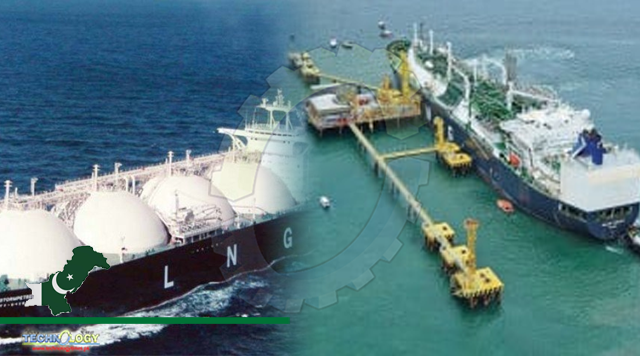Due to dry-docking of the LNG terminal, the Petroleum Division has taken mitigation measures as during the shutdown LNG supplies from the terminal will be curtailed.

The Ministry of Energy has blamed an LNG terminal operator for installing an old Floating Storage and Regasification Unit (FSRU) on a new terminal, which has been damaged and has to be shut down for seven days.
In a statement, the Ministry of Energy said that a used FSRU was installed by the previous government in March 2015. It was developed in 2009 and was installed in Pakistan after overhauling.
A new FSRU needs to be overhauled twice in 15 years. When experts came to Pakistan for the Engro terminal in March 2021 and inspected the FSRU of the terminal, they declared it unsuitable in Pakistan. The real damage came from installing the old FSRU on the new terminal, which has now to be shut down for seven days.
The Ministry of Energy said 70% of the country’s liquefied natural gas (LNG) imports are due to the previous government’s 15-year expensive contracts. Only 30% of the gas can be taken at the spot, whose prices fluctuate regularly in the international market.
“Therefore, it is not correct to say that the present government is buying expensive gas because 70% of it is the same gas that is coming due to the long-term agreements of the past government,” it said.
Sui Northern Gas Pipelines Limited (SNGPL) has recently announced the suspension of gas supply to CNG, cement and fertiliser plants following shutdown of the Engro LNG terminal. Power outages also started on Tuesday following the suspension of LNG supply due to dry-docking of Engro FSRU. The Ministry of Energy said that it was an old FSRU that Engro had installed on a new terminal. Therefore, it resulted in the shutdown.
Shortfall mitigation plan
Due to dry-docking of the LNG terminal, the Petroleum Division has taken mitigation measures as during the shutdown LNG supplies from the terminal will be curtailed. However, supplies from the second LNG terminal will continue to be at its contracted capacity of 600mmcfd.
During the first two days of complete closure of the first terminal, the second terminal will provide maximum supplies. Total supply from both the LNG terminals will gradually rise to 824mmcfd from July 4, 2021. Normal supplies from the first terminal will resume on July 5, 2021 and total supply from both terminals will be 1,152mmcfd.
During the less availability period, gas companies are authorised to manage their load as per the government approved gas supply priority order whereby uninterrupted supplies will be made to domestic, commercial, power and export sectors.
In order to meet the shortfall, the gas companies are curtailing supplies to the industry (non-export), fertiliser, CNG and cement sectors in order of approved priority till July 5, 2021. Some additional indigenous gas supplies are also being injected into the system during this period.
Power generation demand during the dry-docking will also be catered to through furnace oil (LSFO/HSFO) and high-speed diesel (HSD).
The Petroleum Division has directed refineries to maximise their production capacity in this period and they have increased their regular supplies to the power plants. The oil industry has been asked to maximise supplies to the power sector.
In order to augment indigenous supplies, PSO has been directed to float tenders for two cargoes of HSFO, which are expected to arrive during July 12-20 and July 12-31 respectively. PSO has also issued tenders for two cargoes of LSFO, which are expected to be delivered during July 7-15 and July 16-25 respectively. Oil and gas exploration and production (E&P) companies have been asked to enhance production within possible limits.
Originally published at The express tribune